c o n v e r s a t i o n starter
 Walker, Tepper Chair in Visual Arts
Walker, Tepper Chair in Visual Arts
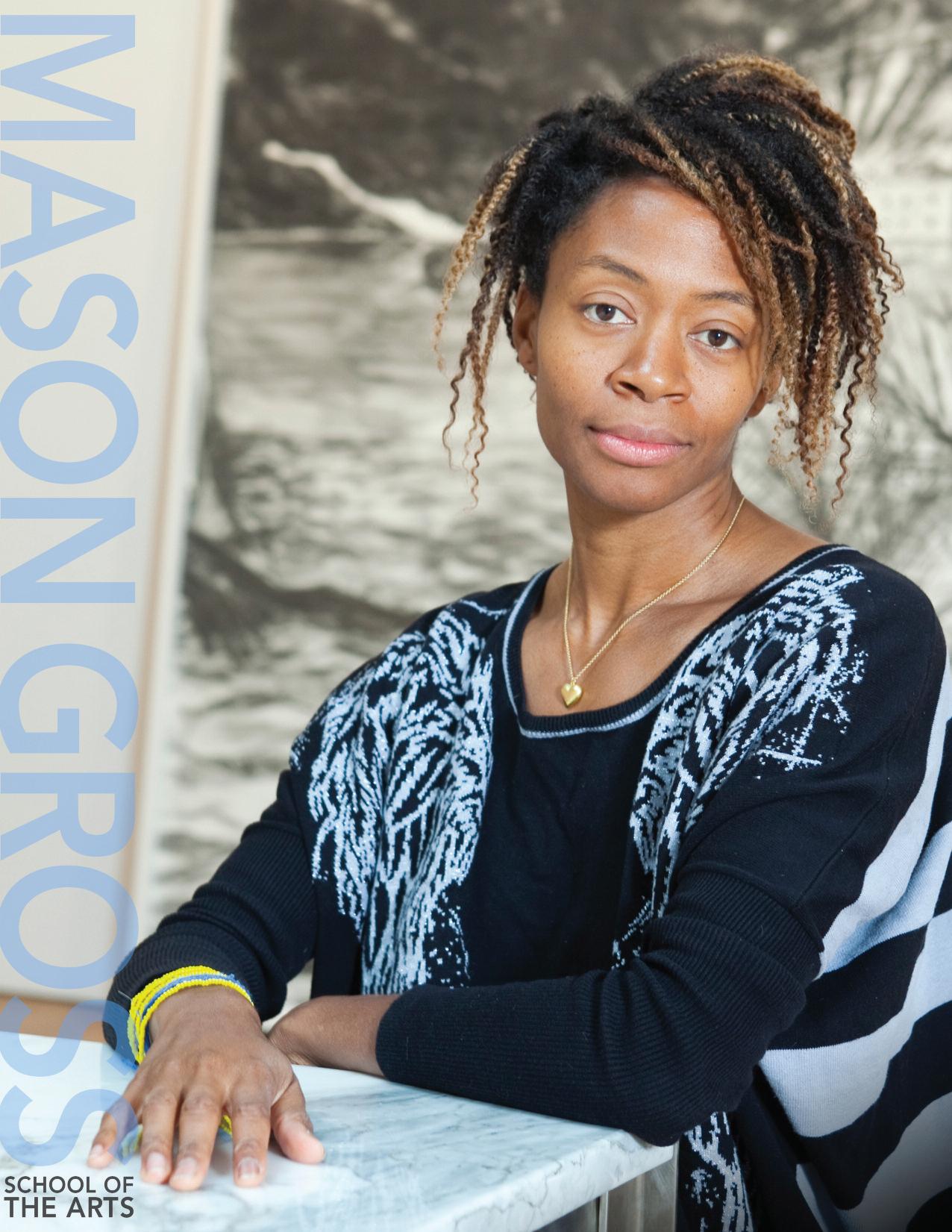
FALL 2015
Kara
A M E S S A G E F R O M T H E D E A N
There is no question about it: 2015-2016 promises to be a very special year for Rutgers and Mason Gross Rutgers will be celebrating its 250th anniversary a landmark reached by only seven other universities in the country Founded in 1766, it is the eighth-oldest college in the nation and one of only nine colonial schools Already a member of the prestigious AAU (American Association of Universities), Rutgers merged just two years ago with UMDNJ (University of Medicine and Dentistry of New Jersey) to become a true mega-public-research university And last July the university officially joined the Big Ten and the CIC (Committee on Institutional Cooperation), the league’s academic arm What better flowering of the university’s potential could one want, as it reaches its 250th birthday? The year will be celebrated with a host of special events, including concerts, exhibits, and lectures at Mason Gross And by happy coincidence, the Mason Gross School will be celebrating its 40th anniversary at the same time Launched with a great burst of creative energy in 1976, Mason Gross has flourished and has become a force for the arts in New Jersey, New York City, and the nation In addition to its top-tier programs in dance, music, theater, and visual arts, the school now boasts the nationally known Brodsky Center for Innovative Print and Paper, an Extension Division that offers arts education to more than 1,700 children and adults around the state, an Arts Online division that provides instruction to more than 7,000 enrollees, and the Rutgers Center For Digital Filmmaking, which welcomes its first class of BFA professional-degree students this year No one can doubt that in the short span of 40 years Mason Gross has more than fulfilled the vision of its founders, Rutgers President Edward J Bloustein and Theater Chair and Founding Dean Jack Bettenbender The school anniversary, too, will be celebrated with an array of special events, culminating in a four-department collaborative performance of Igor Stravinsky’s L’histoire du soldat (The Solder’s Tale) on February 20. Check out our events calendar online, and take a look at our 40th logo and hashtag at left. Mason Gross can also take immense pride in three special appointments that commence this fall: the distinguished artist Kara Walker as the new Tepper Chair in Visual Arts, the prizewinning filmmaker Nicolás Pereda as the director of the Digital Filmmaking Center, and seasoned online educator Ruqqayya Maudoodi as the director of Arts Online. These plus magnificent hires in the Dance, Music, and Theater Departments ensure that Mason Gross is well positioned to prosper as it heads into its fifth decade
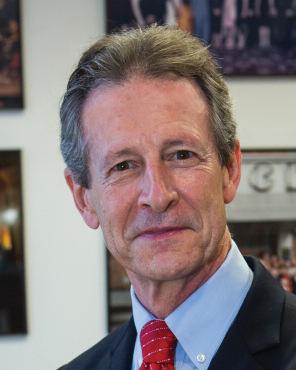
MASONGROSS
OFTHEARTS 4 0 FORTYYEARS
Rutgers Theater Company's production of The House of Influx, 2015.

2 WILLIAM M BROWN
George B. Stauffer, Dean
ANDREA KANE
OF
#MGSA40
SC H OOL
C REATINGARTISTS
M A S O N G R O S S
harder a role is to prep,
more
sticks
Recent grad Kaitlyn Davis, who went on as a last-minute replacement with the Baltimore Concert Opera in the title role of Lakmé just as uprisings were erupting in the city last spring Learn more about Davis’s mad dash to the stage on page 18 of the magazine
you.
CONVERSATION STARTER
Kara Walker is eager to ‘shoot ideas back and forth’ in her role as the Tepper Chair in Visual Arts
MOVING PICTURES
Five things you didn’t know about Nicolás Pereda, the new director of the Rutgers Center For Digital Filmmaking
MASON GROSS EXECUTIVE COMMITTEE
George B Stauffer, Dean
Lisa J Baratta, Associate Dean
Mandy Feiler, Dean of Students
To Be Announced, Director of Development and Alumni Relations
Julia Ritter, Dance Department Chair and Artistic Director

Robert Livingston Aldridge, Music Department Director
David Esbjornson, Theater Department Chair
Gerry Beegan, Visual Arts Department Chair
Robert E Mortensen, Trustee Liaison
DIVISION DIRECTORS
Ruqqayya Maudoodi, Arts Online
Marti Mayo, Brodsky Center for Innovative Editions
Christopher Kenniff, Extension Division
Nicolás Pereda, Rutgers Center For Digital Filmmaking

THIS MAGAZINE IS PUBLISHED FOR ALUMNI, FACULTY, STUDENTS, EMPLOYEES, DONORS, AND FRIENDS OF THE MASON GROSS SCHOOL OF THE ARTS YOUR LETTERS AND COMMENTS ARE WELCOME PLEASE WRITE TO ALUMNI@MASONGROSS RUTGERS EDU OR TO MASON GROSS MAGAZINE, MASON GROSS SCHOOL OF THE ARTS, 33 LIVINGSTON AVENUE, NEW BRUNSWICK, NJ 08901
IN GOOD COMPANY
ON THE COVER
Kara Walker, Tepper Chair in Visual Arts

Photo by Sari Goodfriend
EDITORIAL STAFF
EDITOR: Laurie Granieri
CONTRIBUTING WRITERS: Risa Barisch, Joy Epting, Latiana Gourzong, Lisa Intrabartola, Randy James, Alexandra Klaassen, Jennifer Payan, Emalina Thompson
MASON GROSS SCHOOL OF THE ARTS 848-932-9360
MASON GROSS PERFORMING ARTS CENTER 848-932-7511
MASON GROSS GALLERIES AT CIVIC SQUARE 848-932-5202
“The
the
it
with
”
Dance student Jennifer Payan recounts her summer internship with LeeSaar The Company
3
8 Faculty & Staff News 12 Student & Alumni News 17 Commencement 2015 19 In Memoriam 20 Behind the Scenes
JASON WYCHE
4 7 19
CHRISTOPHER DUGGAN
COURTESY OF NICOLÁS PEREDA
c o n v e r s a t i o n s t a r t e r
BY LISA INTRABARTOLA
Kara Walker swears she’s not a button pusher
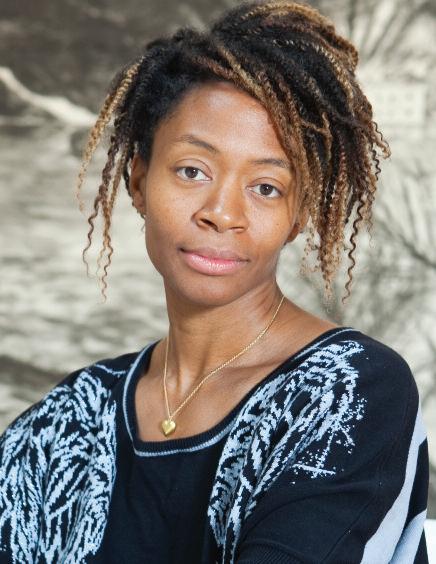
True, the award-winning artist’s arresting tableaus depicting the horrors of slavery evoke visceral, often polarizing, reactions in viewers
But Walker says she approaches each piece with more introspective intentions: slay her own demons and get a little closer to understanding what it means to be an African-American woman today
“I’m trying to unmask and work through these racist tropes and existing attitudes I have ingested and encountered,” she said “I think my work almost haphazardly falls in to the space of race, sex, gender, history, and having to be all those things because there’s almost no other way to tap into my humanity without first going through those filters ”
This fall, as Walker joins the Visual Arts Department at Mason Gross School of the Arts, she plans to welcome students into that deeply personal conversation
“I like the thought of throwing an idea out into a group of eager students and hashing through it every few weeks We can have an extended conversation about what I’m thinking about and what they’re thinking about art and civil duty and space and race, ” Walker, 45, said in an interview over the summer. Her own daughter just began her first year at Oberlin College in Ohio “Students are primed and ready to be shooting ideas back and forth ”
‘ARTISTIC GIANT’

Walker follows Catherine Murphy as the second holder of the fully endowed Tepper Chair in Visual Arts at Mason Gross The position, created in 2011, is funded by a $3 million gift from Rutgers College alumna Marlene A Tepper
A graduate of Atlanta College of Art and the Rhode Island School of Design, Walker is the recipient of multiple awards, most notably John D and Catherine T MacArthur Foundation Achievement Award in 1997 and the United States Artists Eileen Harris Norton Fellowship in 2008 Her work is on view at numerous museums and public collections, including the Solomon R.
Guggenheim Museum, the Museum of Modern Art, and The Metropolitan Museum of Art, all in New York City, the Tate Gallery in London, and the Museo Nazionale delle Arti del XXI Secolo (MAXXI) in Rome.
Walker is even name-checked in a Rutgers University course description for ”Introduction to Art History 106,” which explores “the achievements of artistic giants, spanning Leonardo da Vinci to Kara Walker ”
But the art-world darling doesn’t seem interested in being lionized A soft-spoken, thoughtful educator, Walker is enthusiastic about the opportunity to encourage up-andcoming artists
“Some of my favorite activities these days are to be a cheerleader, mentor, and sometimes curator,” she said
Gerry Beegan, chair of the V isual Arts Department, says Walker's appointment will benefit the school on many levels
“One of the ideas behind the Tepper Chair is to enhance the reputation and the profile of the department within the art community Her taking on that role will be great for us in that regard,” said Beegan “People have been reaching out to us already from elsewhere in the university asking if she can take part in events Kara will be a catalyst to bring Mason Gross closer to other parts of the university ”
Mason Gross Dean George B Stauffer agrees.
“Kara Walker is one of the most distinguished artists of her generation,” he said “This is a coup for Mason Gross, and a coup for Rutgers University.”
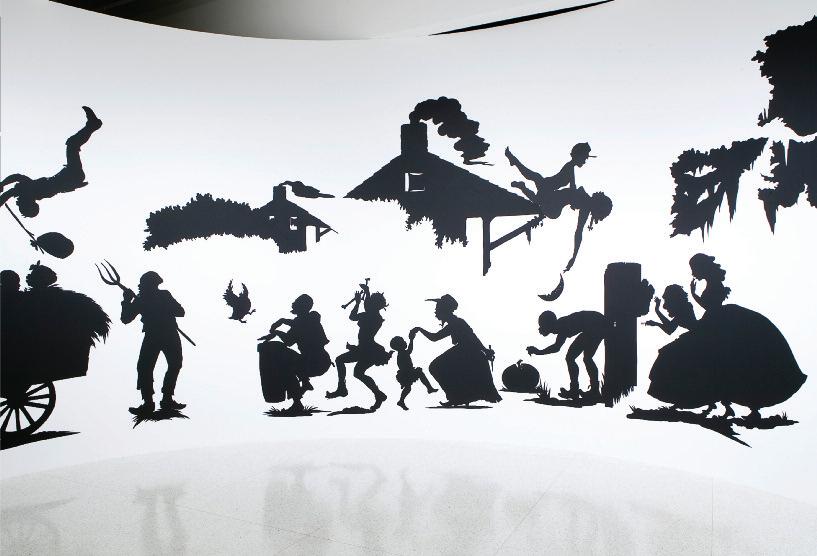
Kara Walker is eager to ‘shoot ideas back and forth’ in her role as the Tepper Chair in Visual Arts
DAVE
4
Kara Walker: My Complement, My Enemy, My Oppressor, My Love, Walker Art Center, Minneapolis, 2008
SWEENEY
“RUTGERS JUST GAVE ME A KIND OF A SENSE OF WHAT I WAS MISSING IN THE IVY LEAGUE, MAYBE A KIND OF HUNGER. THE SCHOOL IS REALLY IN A GOOD PLACE WHERE IT CAN SORT OF PUSH AT BOUNDARIES.”
SARI GOODFRIEND
THINKING BIG
But Walker is more than just a famous name, Beegan said Her willingness to stray from her trademark black cut-paper silhouettes and tackle new mediums, projects, and venues, he said, makes her an ideal student mentor and faculty collaborator Walker’s recent boundary-pushing experiences include crafting the 80-ton A Subtlety, or the Marvelous Sugar Baby sculpture at Brooklyn's Domino Sugar Refinery in 2014 and designing sets, costumes and directing an opera at this year ’ s Venice Biennale
“The department is in great shape, but I think she could bring an extra something, a new energy and new way of doing things,” Beegan said “For the students, I think it will inspire them to create in ways they haven’t imagined before and to take on daunting projects ”
When news broke that Walker accepted the Tepper Chair position, excitement from the student body was palpable, said second-year MFA visual arts student Rachel MacFarlane
“We’ve heard that her approach to engaging the student body will be less traditional, forfeiting formal critiques for more collaborative group workshops,” MacFarlane, 28, said “This alternative approach is a welcomed change, offering students the opportunity to work in more of a think tank type of environment prizing not only the faculty voice but the student community as well ”
of hunger,” she said of her visits to Mason Gross “The school is really in a good place where it can sort of push at boundaries Some of the Ivies can’t relinquish boundaries because they are at the top of the heap and can’t go down from there ”
DIVING IN
Walker plans to spend this fall getting to know her students, Mason Gross, and New Brunswick before charting out her five-year objectives However, Beegan said she did make two requests upon being offered the Tepper Chair position: a student-faculty cookout and a studio. A barbecue and a room of her own may sound innocuous, but they speak volumes about Walker’s humility and her dedication to Mason Gross, said Beegan
Instead of a formal reception, Walker wanted the school to host a welcome barbecue to foster real interactions with faculty and students To her, having a studio at the Livingston Arts Building, which is the locus of the sculpture concentration, is a no-brainer because: “I think better visually ” Having the tools to create and the space to invite others into that process makes more sense to Walker
than a traditional desk-and-computer office But to the faculty and students, including MacFarlane, the choice to create work on campus is indicative of her commitment to Mason Gross
“She will be accessible as a resource and will become a vital part of the Mason Gross student experience Walker’s willingness to become part of Rutgers in a more integrated way is rare and very generous, ” said MacFarlane “As an MFA student, what we ’ re really looking for in a program is outstanding and dedicated mentorship ”
As a mentor, Walker hopes to instill in her students a sense of curiosity about their place in the world and the courage to not only reflect that truth in their work but to thoughtfully defend it

“If anything I can foster an environment of openness and maybe willingness to live with contentious images and objectionable ideas, particularly in the space of art,” said Walker, who has experience discussing her work with unsettled audiences “For me it gets us to a place where we can talk to those concerns and how as artists we can creatively solve problems when problems arise.”
Walker comes to Mason Gross from Columbia University, where she spent 12 years on the faculty leading a select number of graduate students through independent study
Why trade an Ivy League position for one at a state school that’s farther from her Brooklyn home? The switch will be a welcome change, said Walker, who is eager to work with a student body that is both economically and ethnically diverse at a school that is willing to take risks
“Rutgers just gave me a kind of a sense of what I was missing in the Ivies, maybe a kind
Walker’s A Subtlety, or the Marvelous Sugar Baby, an Homage to the unpaid and overworked Artisans who have refined our Sweet tastes from the cane fields to the Kitchens of the New World on the Occasion of the demolition of the Domino Sugar Refining Plant, Domino Sugar Refinery, Brooklyn, 2014.

JASON WYCHE 5
“I THINK MY WORK ALMOST HAPHAZARDLY FALLS IN TO THE SPACE OF RACE, SEX, GENDER, HISTORY AND HAVING TO BE ALL THOSE THINGS BECAUSE THERE’S ALMOST NO OTHER WAY TO TAP INTO MY HUMANITY WITHOUT FIRST GOING THROUGH THOSE FILTERS.”
All that jazz

Piano student carries on her family’s musical legacy
 BY RISA BARISCH
BY RISA BARISCH
Jazz connects to almost everything in my life,” says pianist Naomi Anthony She says her penchant for playing jazz goes back to her g re a t - g r a n d p a re n t s , who sang church songs and the blues, passing the traditional music down to Anthony’s grandparents, who passed them down to her
But Anthony, a second-year jazz piano and music education double-major, wasn’t aware of how those works gave birth to her beloved jazz, which is rooted in an oral tradition based in hymns and work songs.
“When I came to Rutgers and found out in more detail the history of jazz, I realized that my family was a part of that piece of history that resulted in something bigger than what it started with,” says Anthony Listening to recordings from the 1930s and ’40s of her great-grandparents singing, she felt an immediate connection to her ancestors
The links to this “rich history,” says Anthony, were made clear by her Mason Gross music professors, especially Bill O’Connell and Marc Stasio They also helped her to understand all the ways that jazz influenced the music that came after it, including the R&B and hip-hop that she grew up on.
During her first year at Rutgers, Anthony took Stasio’s “Jazz Survey” class, which broadly covers the history of jazz in one semester The
course, Stasio says, ensures that jazz students are better grounded in the music they wish to pursue
“It most certainly influences a student’s playing in the sense that if they like to emulate a certain artist, they can trace that artist’s roots and see the lineage more clearly,” says Stasio, the managing area coordinator of jazz studies at Mason Gross Not knowing the roots and evolution of jazz, he says, “greatly limits one ’ s musical scope ”
COMING HOME
Anthony isn’t interested in limitations. She says that jazz has given her musical freedom and the means to develop her own sound avenues that she couldn’t find playing pop tunes or even classical music
“Before I started playing jazz, I just played what was given to me I couldn’t really explore anything further because it wasn’t complex,” says Anthony, who has been playing the piano since she was 10 years old “But with jazz, you can always find the complexity within the music and interpret it your own way ”
Anthony says that she feels “at home” in jazz, even though the medium’s female musicians don’t always get the credit or exposure that they deserve.
“People jump to singers like Ella [Fitzgerald] and Sarah [Vaughan], and it’s sad to see that not a lot of other women get acknowledged,” says Anthony, who has immersed herself in works by early jazz pianists Sweet Emma Barrett
and Mary Lou Williams as well as modern-day musicians like Esperanza Spalding “They’re out there you just have to look ”

When Anthony arrived at Mason Gross after studying jazz piano at the Rockland Conservatory of Music in Pearl River, New York, she was surprised to find that she was one of only a handful of women in the Music Department who were studying jazz

But she’s mostly unfazed by it, and takes advantage of being so close to New York City to regularly catch performances by female musicians Plus, Anthony says she’s made a lot of good friends in the Music Department and, being one of the only women challenges her to make her musical voice heard.
“Even though I may feel isolated sometimes, that encourages me to say, ‘Hey, I’m here too,’ ” Anthony says “It’s a mixture of doing my own thing but also being a pioneer ” Doing her own thing in jazz has not always come easily for Anthony, who, during her first year on campus, was confused by the timidity that engulfed her usually outgoing personality during performances
“Sometimes music can open up an aspect of your personality that you didn’t know was there,” Anthony says “I didn’t know that I could ever be shy.”
After consulting Stasio, O’Connell, and her mother, she realized the problem: “You have to let your guard down You have to be an open book, share your talent, and see how [listeners] respond to it It took me a while to get used to that ”
A confidence booster came Anthony’s way last year when she participated in The Mingus Project, a program that brings jazz musicians and scholars to campus for intensive master classes Among the “really funky personalities” ho showed up was jazz pianist and composer elen Sung, who Anthony says encouraged er to be more aggressive in her performance
Back on campus this fall for her second year, nthony says she looks forward to continued rowth even if she’s the only woman around
“Sometimes I don’t even notice that I’m the nly girl in the classroom,” says Anthony “It’s nly a big deal if you make it a big deal
”
“SOMETIMES I DON’T EVEN NOTICE THAT I’M THE ONLY GIRL IN THE CLASSROOM IT’S ONLY A BIG DEAL IF YOU MAKE IT A BIG DEAL ”
6 Monday, December 14, 2015 6–8 p.m. The Ailey Studios The Joan Weill Center for Dance 405 West 55th Street at Ninth Avenue, New York City OPEN TO ALL RUTGERS–NEW BRUNSWICK ARTS ALUMNI FREE FOOD FREE DRINKS OLD FRIENDS Eat, drink, and be (very) merry, and spend the evening reminiscing with former classmates and professors More information is available by emailing events@masongross rutgers edu or by calling 848-932-9360
Naomi Anthony
RISA BARISCH
Nicolás Pereda, the new director of


and was awarded the Premio Orizzonti at the Venice Film
in 2010 for his film Summer of Goliath. Pereda is a Mexican-Canadian filmmaker whose work often explores Mexican class structure through family and friendship dynamics. His film Minotaur screened in September at the Toronto International Film Festival and in October at the New York Film Festival. Below he talks about what inspires him, how he got started in filmmaking, and what he wants to bring to the BFA in Digital Filmmaking.
He believes in boredom
When I’m bored I start to think of ideas, of projects, of films The ideas come from my everyday experience, from the things that I witness and from things that happen to me, but I need to be bored in order to reflect upon those things I lived in Canada for 12 years I guess it was the right place for me
He keeps it in the family
I’m interested in the world that immediately surrounds me I try to cast close friends and my own family members and I shoot mostly in their homes















He was not a film geek
My parents hardly took me to the cinema as a child, and was very restricted I started watching films when I was 1 discovering a world that was completely new to me. I rea cinema could be something that I had never imagined
’It was alchemy’
I was 15 years old the first time I had access to a video camera and two VHS decks The process of editing enamored me. It was alchemy. I didn’t know what to do with the medium, but I loved it
He wants Rutgers students to be game-
The film industry has standardized all levels of production. It dictates the way screenplays are formatted, how stories are structured, the way a camera should be positioned, the lengths of shots, etc These rules are artificial and incredibly limiting for artistic expression I hope students in our program will take risks and will understand cinema as a unique art form, free from the constraints from the industry.
ngs About eda 5





Why I give: RUTH G. PICKER
BY EMALINA THOMPSON
Martin and Ruth Picker didn’t just teach music history at Rutgers, they had a hand in making music history at Rutgers
The Pickers taught at Rutgers before the Mason Gross School of the Arts existed; in fact, they knew university president Mason Gross, who served in that capacity from 1959 to 1971
Martin began teaching at Rutgers in 1961, establishing the graduate program in musicology When he died in 2005, Ruth sought to honor her husband and his work by creating the Ruth and Martin Picker Early Performance Music Fund Picker says she believes in the fund because it provides a way to “keep the program going as strongly as I possibly can. ”
Picker says she’s particularly interested in encouraging students’ interest in early music (music created before 1600) because “I feel very strongly that the performance, and study of it, preserves music history ” Just look at the artwork of the 14th, 15th, and 16th centuries, she says, and you will witness “how important music was in the lives of people who lived during that time We can see what instruments were used, how the music was conducted, the size of the choirs ”

Ultimately, Picker says: “I am very happy that the funds are being put to the use I intended and for something that I know my husband would be delighted about.”




 COURTESY OF NICOLÁS PEREDA
COURTESY OF NICOLÁS PEREDA
7
1. 2. 3. 4. 5.
the Rutgers Center For Digital Filmmaking, has presented at major international film festivals including Cannes,
Festival
Faculty & Staff


Former sculpture professor Melvin Edwards has a retrospective on view through January 10 at the university’s Jane Voorhees Zimmerli Art Museum Melvin Edwards: Five Decades features the artist’s barbed-wire sculptures, as well as his Lynch Fragments series, smallscale reliefs begun in the early 1960s that bear witness to the social and political upheaval of the civil rights movement
Music’s Rebecca Cypess presented the concert “In Sara Levy’s Salon” on May 19 at the Center of Jewish History in New York City She has also been awarded a shortterm publication grant from the American Association of University Women for the completion of her book, Curious and Modern In v e n tio n s : In s tru m e n ta l M u s ic a s D isc o v e ry in Galileo’s Italy In addition, Cypess
began her second term as secretary of the Society for Seventeenth-Century Music. Dance’s Barbara Bashaw was awarded an honorary doctorate of fine arts, the highest honor bestowed by the trustees of the SUNY System, and was the graduate commencement speaker at The College at Brockport: State University of New York on May 15

Visual Arts faculty member Raphael Montañez-Ortiz had two pieces in the new downtown Whitney building’s inaugural show, which ran May 1 through September 27 in New York City He’s also included in the new Whitney Museum of American Art: Handbook of the Collection, which features works by 350 artists among the more than 3,000 artists whose works are in the museum collection

Music’s Christopher Doll, associate professor of composition and theory, was selected as a Rutgers–New Brunswick Chancellor’s Scholar and will receive additional research support through the Chancellor’s Excellence Fund
Photography faculty member Gary Schneider has been honored by the university for “work showing exceptional promise ” Schneider was awarded a Rutgers Board of Trustees Research Fellowship for Scholarly Excellence for his “compelling photographs and deep understanding and critical analysis of photography,” and will receive a $1,000 research grant
Clarinetist Maureen Hurd of the Music Department performed on April 9 at New York City’s Symphony Space with the Scandia Symphony in an all-Nielsen and Sibelius concert celebrating the 150th birthday year of both composers On April 25, she performed as principal clarinet at New York City’s Alice Tully Hall with the Riverside Choral Society Orchestra On May 29, Hurd performed at New York City’s Carnegie Hall with the American Symphony Orchestra
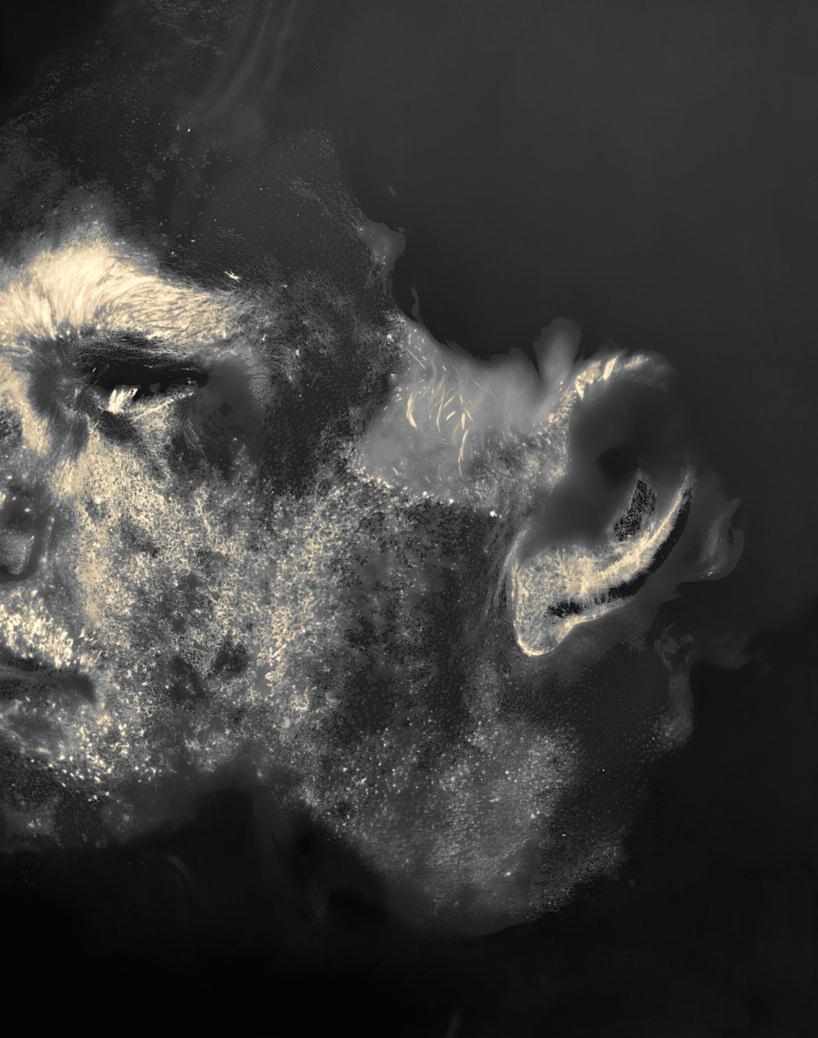 Photographer Gary Schneider’s Mask Self-Portrait, 1999 In the spring, the university honored Schneider, a Visual Arts faculty member, with a research fellowship.
Photographer Gary Schneider’s Mask Self-Portrait, 1999 In the spring, the university honored Schneider, a Visual Arts faculty member, with a research fellowship.
8
BY ALEXANDRA KLAASSEN
Marc Handelman, a painter who also works in film/video, installation, and book arts, exhibited 12 new paintings and an artist’s book at Sikkema Jenkins & Co in New York City last spring At first glance, this series, focused on elements in nature, seems ordered, even serene. But take a second look at works such as Somnambulist, Dear Stakeholder (below), and Touching Lives, Improving Life, note the swirling botanicals and insects that form human faces, and you will feel the disquiet Handelman alludes to.
Here, Handelman discusses his work, his inspiration, and his first “artsy” job.
Do you come from an artistic family?
Neither of my parents are artists [Handelman’s mother was a lawyer who dealt with environmental issues; his father practiced internal medicine], but I really grew up with wonderful exposure to art through my parents’ enthusiasm for it As I grew older, I got to know our neighbor, Herb Greene, who was a postmodernist architect and a painter It was always inspiring, thrilling really, to be in his studio Being in Herb's studio was the first time I was ever able to actually imagine what it might be like to work as an artist It was one of the first steps in demystifying art
What was your first job?
My first interesting job was working as an after-school arts coordinator for a Berkeley (California) Montessori school one summer during college I was working with 5- and 6-year-old kids It was wonderful, but I don’t think I have ever worked harder in my life I would just go home after work every day and collapse
What inspires you?
I am finding inspiration in unexpected places these days as I spend so much time with my 4-year-old daughter It’s a cliché, but it’s just amazing to rediscover everything with her I think children can also force you to be more open, and my work has definitely been impacted by this Perhaps I often find the deepest inspiration in art itself, and the dialogues I have with other artists Artists need critical feedback from other artists who understand the technical, formal, philosophical, and critical problems that attend the making of things
In some of your recent paintings, you set nature—plants and insects against a white backdrop to create human faces. What gave you that idea, and what are you trying to communicate?

I came across a Toyota Sustainability Report for European shareholders that had this incredible image on the cover with these exotic botanicals and fauna forming the face of an “Asiatic” woman This was clearly an adaptation of a well-known painting by the Mexican Surrealist Octavio Ocampo I immediately became drawn to these two ideas the anthropomorphizing of nature and with that its gendering, feminizing, and idealization The white “ground,” or backdrop, in my paintings is a way to allude to both a screen-like digital space of the image, and to the conventional white makeup of the Geisha.
 JESSICA DICKINSON
JESSICA DICKINSON
My work has often explored how beauty is used to sell different beliefs, values, and desires
Are you afraid that these pieces will be seen solely for their aesthetic value their “prettiness”?
I do think it’s easy for many people to take these pieces at face value given their subject matter butterflies, flowers, beautiful plants, etc But these images also have to get under your skin There’s an intentionally disarming quality to them The titles are there to agitate that serenity, but I also think there is something actually disturbing, if not creepy, in the paintings themselves, in their pervasive unnaturalness, the hyper-control with which they were made, and the overall feeling of mediation, or even mechanization.
Why is the pursuit of art important to you?
Art is tenuously amoral It has been used to legitimize and support repressive and violent regimes, institutions, and social structures It has also been used as a way to resist them Meaning, of course, is never fixed, but I think it’s important to risk the irrelevance, and possible misappropriation of art. The pursuit of art is the desire to critically communicate and express the urgency of what’s at stake in our shared lives and in our shared world
Dear Stakeholder, 2014 Oil on canvas. 87.5 inches by 61.75 inches. Courtesy of the artist and Sikkema Jenkins & Co , New York

“THERE’S AN INTENTIONALLY DISARMING QUALITY TO THESE IMAGES. THE TITLES ARE THERE TO AGITATE THAT SERENITY.”
Marc Handelman
Visual arts professor describes his work as ‘disturbing’ and ‘creepy’
9
Latiana Gourzong, Technical Director
Mason Gross School of the Arts
Bachelor of Fine Arts, Theater, ’13
I was the recipient of two scholarships at Mason Gross, which is a large part of why I chose the school. These scholarships played a pivotal role in allowing me to study in a world-class theater program.
Being able to learn from the Mason Gross faculty was a life-changing opportunity for me: The faculty who taught me were invested in my success and helped me to become the best technical director I could be Freshman year, my teacher David Gordon invited our class to sit in on tech for a production he was the set designer for He brought me down on stage to meet the technical director, and we exchanged information That particular technical director helped me out for a few years with different shows I was involved in That connection all began because of a teacher inviting his class to a tech. Currently I am the technical director at The Shakespeare Theatre of New Jersey in Madison, and I worked on a production of Evita that ran at the Count Basie Theatre in Red Bank I will be working on the Opera at Rutgers spring-semester production of Così fan tutte.
I believe it’s important to give back to my alma mater. I spent a lot of time at Mason Gross, and it’s the foundation of everything I’ve learned about my craft That’s why I contribute to the scholarship fund I want to ensure that in the future students benefit from the same support that I had
My giving method works for me By giving smaller amounts more frequently I am able to eliminate my own concern about making sure I have enough money each month
Let’s be real: I’m a recent BFA grad working in the theater I’m not rolling in money, but I still think it’s important for me to give Anything I can do to help future students have the opportunity I had is something that is worth supporting. I hope you will join me.
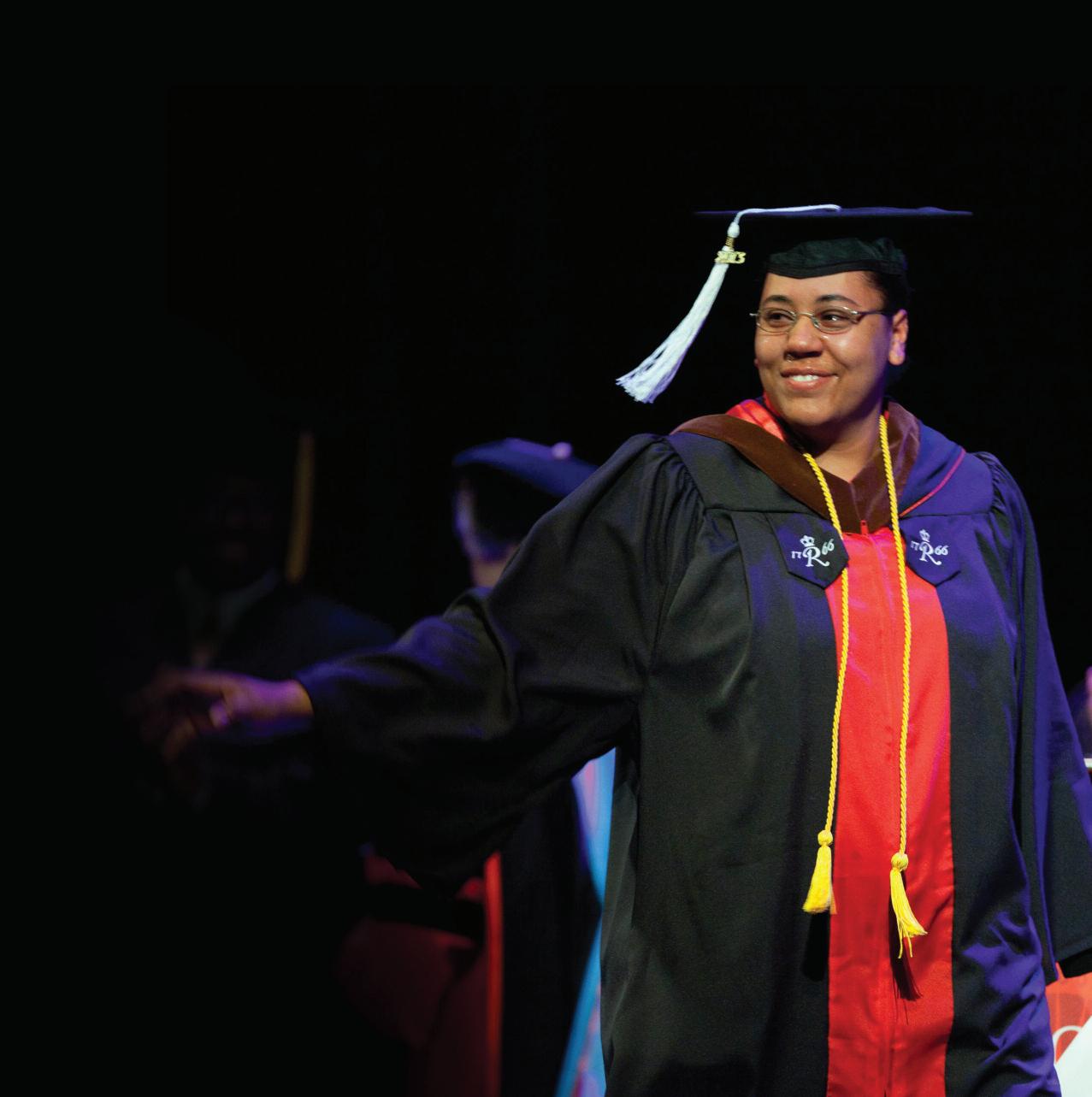
Give to the Mason Gross Annual Fund
To make a gift to the Mason Gross School of the Arts, please contact the Office of Development at 848-932-9360, or use the enclosed envelope to mail your donation to the Office of Development, Mason Gross School of the Arts, 33 Livingston Avenue, New Brunswick, NJ 08901. Please make checks payable to the Rutgers University Foundation
JODY SOMERS
10
LET’S BE REAL: I’M A RECENT BFA GRAD WORKING IN THE THEATER I’M NOT ROLLING IN MONEY, BUT I STILL THINK IT’S IMPORTANT FOR ME TO GIVE.
Student-actor Elijah Coleman played Brother Como in George Sand’s gender-bending Gabriel, which was staged in April at the Jameson Studio Theater The show sold out
Q: How do you get into character?
A: I have to start early I have to walk to the grocery store in character... I work at Rite Aid, and I do a lot of my character work in there. Customers ask me: “Who are you today?”

Camping it up

The Mason Gross Extension Division hosts a wide variety of summer programs for children and young adults, including the Rutgers Summer Jazz Institute, the Rutgers Summer Acting Conservatory, and several dance intensives Here’s a peek at the Kids


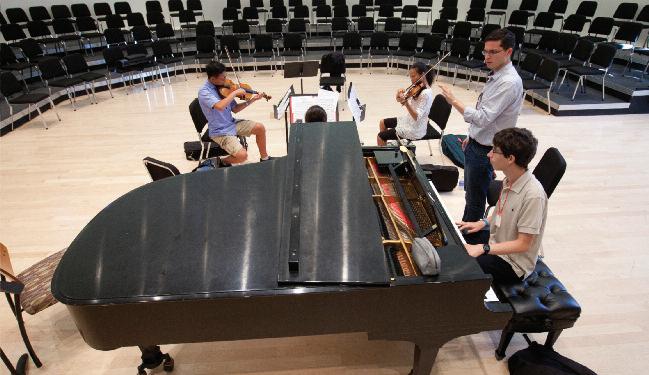
Create sessions featuring visual arts, music, movement, and improvisational theater, as well as the ASTA/NJ Chamber Music Institute

Learn more about the Extension Division’s year-round community offerings to artists of all ages at www.masongross.rutgers.edu/extension.

THE
ASK
ARTIST
11
Elijah Coleman, Theater
PHOTOS BY JODY SOMERS
ALLEGRA HEART
Student & Alumni
On June 19, work by four dance alums was featured in the Jersey (New) Moves! Emerging Choreographers event at the New Jersey Performing Arts Center’s Victoria Theater in Newark The performance highlighted world premieres by newcomers selected to create work with established choreographers The program featured dances from recent alumni Robert Mark Burke, Lauren Connolly, Kyle Georgina Marsh, and Arielle Petruzzella.
Theater alum Melissa Chacon stage managed the production of The Iceman Cometh, starring Nathan Lane, at Brooklyn Academy of Music The show, which originated at the Goodman Theatre in Chicago, ran from February 12 through March 15 at BAM
Visual Arts student Basia Goszczynska was in the group show Recycle at Socrates Sculpture Park in New York City from May 9 to June 14 Her work, made of chicken wire, steel rod, plastic bags, wood, and cement, was named best of show

Dance student Anna Gichan is the recipient of an award from the Department of Jewish Studies and The Allen and Joan Bildner Center for the Study of Jewish Life to study in Israel Gichan is headed overseas this school year to participate in the DanceJerusalem program.
Music students performed alongside their professors in two gigs on March 30 at the Blue Note Jazz Club in New York City. Participating students were: Devenny Bennett, Michael Bernabe, Abraham Burton, Gregory DeAngelis, John Donathan, Kyle Duppstadt, Matthew Echols, Shawn Edmonds, Anthony Fazio, Ross Garlow, Daniel Giannone, Yi-Jiun Kao, Jimmy Merchant, Luciano Minetti, John Morrison, John Nunez, Joshua Orr, Timothy Rechen, Oliver Santana Rivera, Sam Tobias, and Ben Weisiger.
Visual Arts student Jason Baerg was featured in the exhibition Returning from February 6 to May 3 at Urban Shaman Gallery in Winnipeg, Manitoba, in Canada
Theater design alum David P Thiele has been named the managing director of the David H Koch Theater at Lincoln Center, home of the New York City Ballet
On June 15, Nate Chinen of The New York T imes reviewed multireedist and PhD composition student Brian Landrus’s new recording, The Deep Below, calling it “ an album of austere self-possession ”
Theater alumnus Moritz von Stuelpnagel was nominated for a Tony Award for best director of Broadway’s H a n d to G o d The play received a total of five Tony nominations, including best play, best actor, best actress, and best featured actress. The play marked von Stuelpnagel’s Broadway directorial debut
Dance alum Scott Schneider joined the iconic Le Lido Cabaret on the ChampsElysées in Paris earlier this year in a new show, Paris Merveilles Schneider performs as a Lido Boy in choreography by Benoit Swan Pouffer, who was a Mason Gross Presents artist in 2010 The Lido is famous for cabaret and burlesque shows featuring performers over the years including Edith Piaf, Maurice Chevalier, Marlene Dietrich, Eartha Kitt, Josephine Baker, and Johnny Hallyday.
Music grad Dan Spratlan has been appointed acting director of choral activities at Drexel University in Philadelphia.
Theater grad Barbara Seyda has been awarded the Yale Drama Series Prize for her play Celia, A Slave: 26 Characters Testify
Vocal performance alum Rachel Zatcoff recently made her debut under the bright lights of Broadway as the Christine alternate in The Phantom of the Opera See her Monday evenings and Saturday matinees at the Majestic Theatre
 Erin Dowd, who participated in a Merce Cunningham workshop on campus while here as a dance student, performed in a reconstruction of Cunningham’s dance drama Crises at New York City’s Whitney Museum of American Art in June
Basia Goszczynska’s Engineered Hollow (2014), made of chicken wire, steel rod, plastic bags, wood, and cement, was on view in Long Island City, New York.
Erin Dowd, who participated in a Merce Cunningham workshop on campus while here as a dance student, performed in a reconstruction of Cunningham’s dance drama Crises at New York City’s Whitney Museum of American Art in June
Basia Goszczynska’s Engineered Hollow (2014), made of chicken wire, steel rod, plastic bags, wood, and cement, was on view in Long Island City, New York.
12
Dance alum Scott Schneider (front left) performs in the iconic Le Lido Cabaret on the Champs-Elysées in Paris.
HOME IS WHERE THE ART IS
Theater
alum explores the Garden State’s creative side as NJTV correspondent
 BY RISA BARISCH
BY RISA BARISCH
When it comes to the arts in her home state, Maddie Orton can sum up how she feels in four words: “New Jersey is cool ”
“There’s so much going on here, it’s insane,” says Orton, arts correspondent for NJTV News with Mary Alice W illiams and host of The Arts Project with Maddie Orton, a monthly series focused on visual and performing arts around the state “My life goal is that people will check what’s happening in their backyard first before hopping a train to New York or Philadelphia ”
Orton has been well versed in the creative output of the state since her days at Rutgers, where she majored in theater and American studies A series of college internships, including two summers at the New Jersey State Council on the Arts, gave her a sense of the breadth of arts organizations across the state
“All the way down to Cape May and all the way up to Sussex it’s choirs, orchestras, jazz bands, visual artists, folk artists, apprentices,” says Orton, who lights up when she speaks about the arts. “I catalogued all this information in my head, so by the end of college, I had an encyclopedic knowledge of these organizations ”
All of that inventory has served her well, in positions at the New Brunswick Cultural Center and the statewide arts advocacy organization ArtPride NJ, and in her current television gig a career transition that came with challenges
“I had no experience in journalism, really,” says Orton, laughing as she recalls her unfamiliarity with television production terms such as “chyrons” and “lower thirds ” “The learning curve was tremendous ”
But producers liked that her theater background taught her how to be comfortable in front of people and that she had a firm grasp of her subject matter Orton joined NJTV, a PBS member network, in early 2013, and has covered everything from a graffiti festival in Trenton to the Exit Zero Jazz Festival in Cape May to a paperart exhibit at the Morris Museum in Morristown
“I really sponge all this stuff up because I just love it,” Orton says, smiling widely “My job lets me learn things that I might not come across otherwise,” including miming with Bill Bowers, another Mason Gross School alum, and fine-art appraisal with Rago Auctions, based in Lambertville
Orton is sometimes surprised at how her career has so well embodied her two college majors, which took her love of acting and made room for politics, literature, film, and history Back then, in the midst of the economic downturn in 2008, Orton worried about the practicality of her theater degree, but she forged ahead and graduated a year later It turns out that training has come in handy
“The things you learn in acting class moment-to-moment work, being in the present, and being able to take risks and to build off of other people’s ideas is all so helpful in the workplace,” Orton says
Orton found that the BA theater program at Mason Gross, under the direction of Marshall Jones III, gave her access to a wide range of subjects, including acting, production, costuming, set design, finance and development, and management
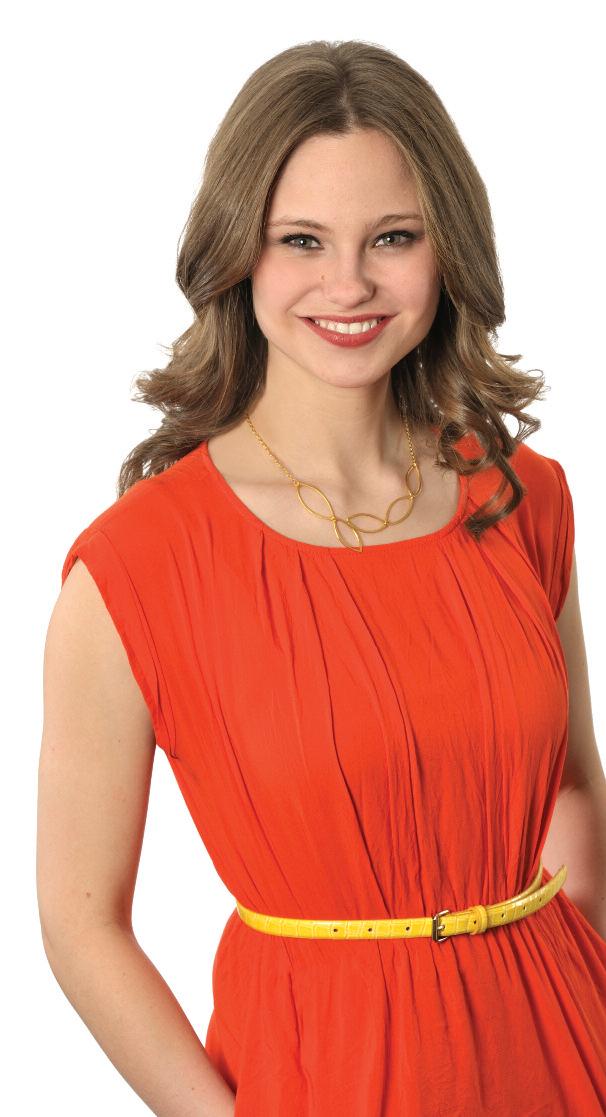
She cites Jones as an “incredible mentor” whom she has stayed in close touch with since graduation
Jones says he is proud of his former student and the way that she promotes the arts through her work
“Maddie is very politically active, and she wholeheartedly believes in advocating for the arts,” Jones says “It’s wonderful to see her utilize her role at NJTV in that way her belief in the arts really comes through ” Orton’s enthusiasm and willingness to throw herself into whatever subject she’s covering is evident in her broadcasts, whether she’s learning stage combat with Broadway fight director (and Mason Gross alum) Rick Sordelet or interviewing Tony-winning actor and dancer Bebe Neuwirth
“That is not an act,” Jones says “That is her Maddie is just so upbeat and positive ”
Now, the self-described “total Jersey girl” is on a mission to uncover the next “super-cool thing” happening in towns across the Garden State
“The possibility of finding that person who’s going to be the next big person this is where you do that,” Orton says “You could go to New York City to see the person that’s been prepackaged by marketing people, or you can go to a local New Jersey venue and see that person before they blow up This is the place to do it ”
13
“THE POSSIBILITY OF FINDING THAT PERSON WHO’S GOING TO BE THE NEXT BIG PERSON NEW JERSEY IS WHERE YOU DO THAT.”
Maddie Orton
COURTESY OF NJTV
COURTESY OF MADDIE ORTON
DANCE’S DOUG ELKINS DISCUSSES THE ELEMENTS THAT FUEL HIS WORK

Social Dances
Sparked
B-Boying is a style primarily among African-Americans but also Puerto Rican youth in the late 1970s and the early 1980s. It is still evolving and is global in its reach It is the first dance form I studied, played, and danced, in gymnasiums, community centers, and the New York City club scene.
Capoeira
This Brazilian martial art combines elements of dance, acrobatics, and music It was developed in Brazil mainly by West African descendants with native Brazilian influences, probably in the beginning of the 16th century It is known for quick and complex moves and highly mobile techniques
Paul Taylor’s Esplanade
Taylor is one of the last living members of the second generation of America's modern dance artists He is a brilliant trickster and iconoclast! The first contemporary dance I ever saw was his, Esplanade, a dance made up of highly stylized “pedestrian movement” walking, running, falling, and sliding to Bach It’s paradoxically simple and complex at the same time
Trisha Brown
Elkins, a Bessie Awardwinning professor of dance here at Mason Gross, as well as a Guggenheim fellow, began his dance career as a B-boy, touring the world with break-dance groups Earlier this year he received a commission to make a new piece with Paul Taylor’s American Modern Dance.
Brown is a postmodernist American choreographer and dancer Brilliant choreographer! She has described herself as “ a bricklayer with a sense of humor.”
Understanding Comics: The Invisible Art by Scott McCloud
This nonfiction book explores the formal aspects of comics, their fundamental vocabulary, and various ways they have been used Brilliant book expounding on theoretical ideas about comics as an art form and medium of communication
Clockwise from top left: A character from Satoshi Kon's 2001 fantasy film, Millennium Actress; artwork from Makoto Shinkai's 2007 film, 5 Centimeters Per Second; a martial-arts pose.
A wonderful series of lectures by Calvino regarding the values of literature that he felt were important for the coming millennium
Wuxia/Kung
Fu Films

I have been deeply influenced by Kung Fu fight choreography; it’s absolutely brilliant and beautiful Here is a short list of my favorite Wuxia choreographers/directors: Jackie Chan, Sammo Hung, Donnie Ye, and the amazing Yuen Woo-ping!
Japanese Anime
I love the colorful, highly stylized graphics, vibrant characters, brilliant compositions, and amazing worlds created In particular, I love the films of Satoshi Kon, Hayao Miyazaki, Mamoru Hosoda, and Makoto Shinkai
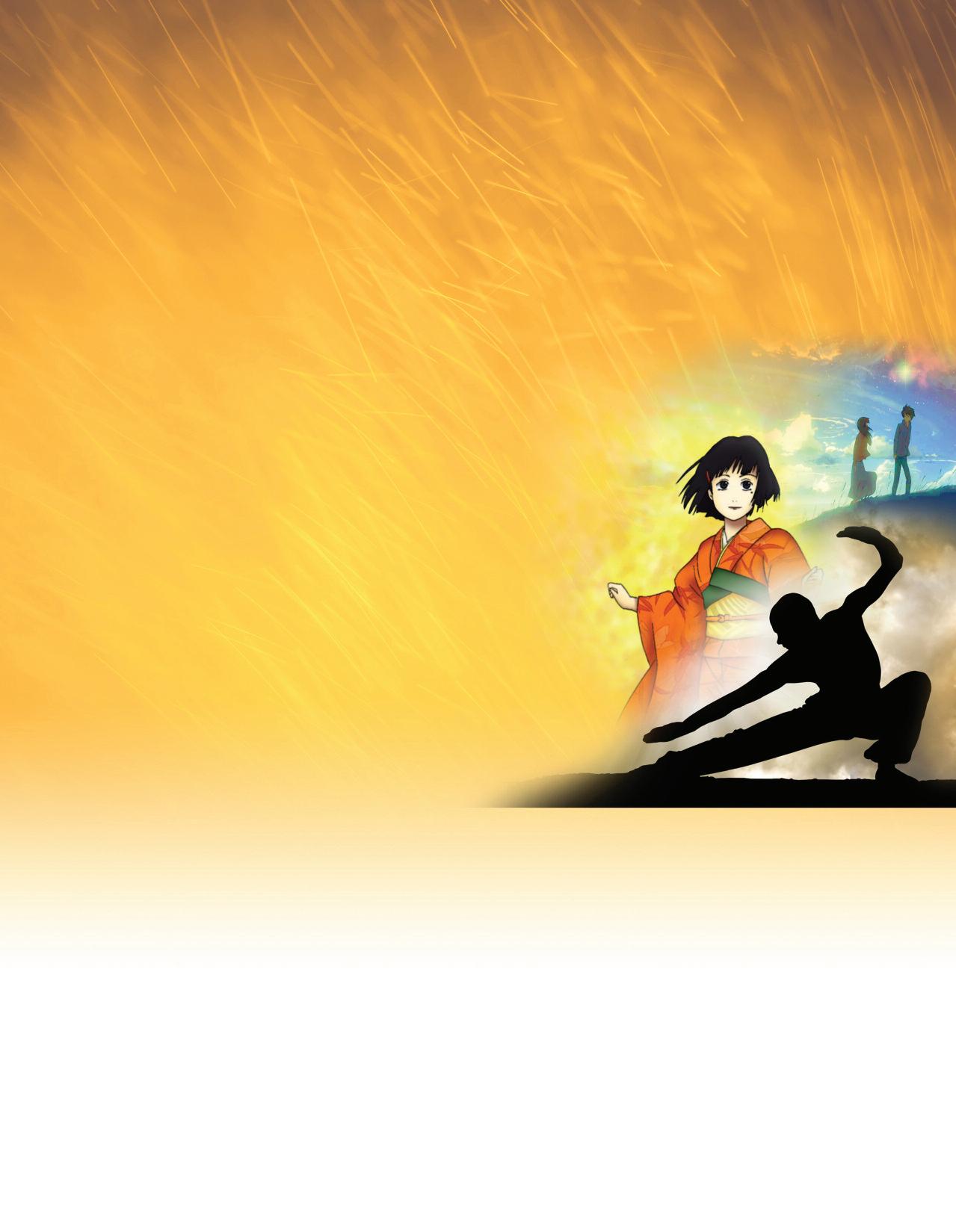
Maudoodi takes the helm of Arts Online

New Arts Online director Ruqqayya Maudoodi is an instructional technologist, educator, and researcher specializing in designing curriculum for online and hybrid delivery, but she still relies on pencil and paper to organize her thoughts. Maudoodi comes to Mason Gross from the University of Houston, where, most recently, she served as a research fellow designing curriculum for online delivery and taught courses in educational technology She also has a background in studio art and arts education with a concentration in printmaking. Here, Maudoodi talks tech Her answers may surprise you
People have such strong feelings about technology either they fear it or seem to be addicted. What do you love/loathe?
What I love about technology is also what I hate: Technology is always changing, and that is exciting, but it can also be challenging to keep up Staying flexible and adapting is the key Why online learning?
Massive Open Online Courses (MOOCs) are really pushing boundaries and creating a more open world At a previous institution, I participated
in the development of a MOOC on technology tools for teachers The course was free and open to students globally The enrollment was in the thousands, and the discussion forums were an exciting place to share ideas with educators from all over the world

What piece of technology would you never be able to live without?
My “low-tech” devices. Pencil and paper are still the best tools to hash out ideas I don’t think in a linear fashion, so pencil and paper are the easiest way to organize my thoughts before transferring over to a more sophisticated technology
Tell us how art and technology can complement one another Art and technology work well together, and I have always relied on my background in art when it comes to instructional design Simplicity is key to designing efficient and appealing courses It is such a critical concept, because you don’t want students to get lost in the technology
14
CHRISTOPHER DUGGAN
WEAVER
ELEANOR
utgers students ‘paint the town’ or Mumford & Sons


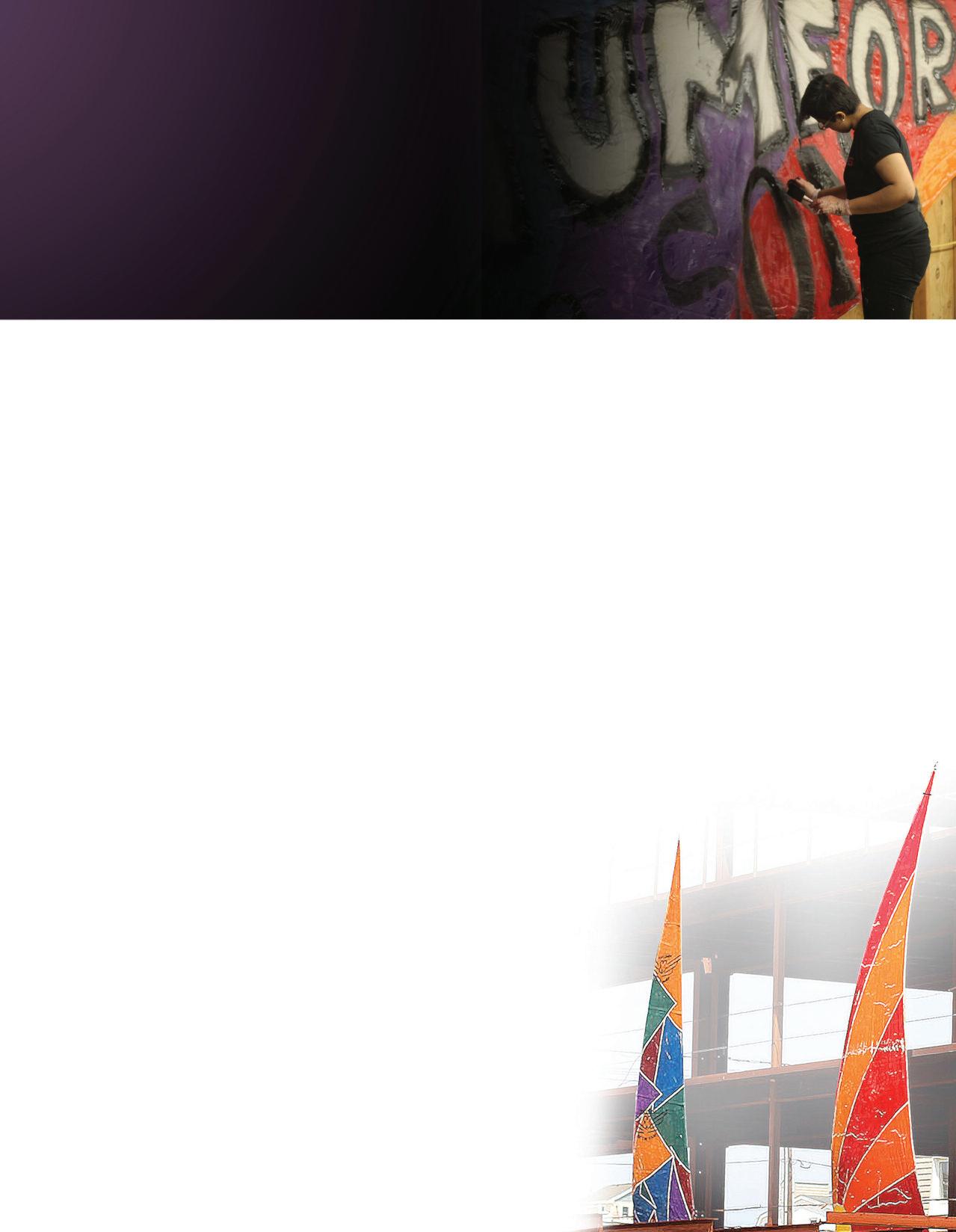 BY ALEXANDRA KLAASSEN
BY ALEXANDRA KLAASSEN
The borough of Seaside Heights in Ocean County, New Jersey, underwent an extreme makeover for a hot date: For a month, college and high school students, including volunteers from the Mason Gross School’s Visual Arts Department, dressed up the boardwalk, storefronts, and sidewalks for the arrival of the English folkrock band Mumford & Sons’ Gentlemen of the Road Stopover Festival The festival came to Seaside Heights June 5 and 6 and featured such bands as Alabama Shakes, Jenny Lewis, and The Flaming Lips
The band said that the Stopover Festivals are about more than music, calling the performances a “celebration of a town ”
If any town needs celebrating right about now, it’s Seaside Heights
Rutgers students led several art initiatives, decorating restaurants and bars, stenciling sidewalks and garbage bins with Mumford & Sons-themed art Project student coordinator Pooja Kolluri says that all materials, with the exception of the paint and paper, were recycled from objects that were destroyed when Hurricane Sandy hit in October 2012 Sandy destroyed Seaside’s boardwalk and flooded shops, businesses, and homes A year later, a fire destroyed portions of the newly rebuilt boardwalk Some businesses still have not recovered

Mason Gross design student Lisett Clark says that the artists were allowed “100 percent creativity” within the given theme of Mumford & Sons.
Clark oversaw decorating the borough’s Hemingway’s Café and Captain Hooks Bar Clark, with Rutgers student Linda Hong and Mason Gross Visual Arts students Jackson Manaye and Taylor Narsavage, created cutouts, paintings, and drawings depicting Gentlemen of the Road iconography a bearded man with goggles atop his head, his female counterpart, and a winged logo with the tour name emblazoned on the top and bottom The original cut-outs, paintings, and drawings were displayed at Hemingway’s, while photos of those pieces set up at iconic Seaside spots (the boardwalk, the beach) were hung in Captain Hooks Mason Gross painting student Shiza Chaudhary oversaw painting six sails from boats destroyed by Hurricane Sandy The sails were placed on the front of a steel building frame on Ocean Boulevard According to NJ com, in the wake of Hurricane Sandy the developer abandoned the structure, which was meant to become a nightclub The sails, painted with Mumford & Sons and the other performing bands’ iconography, welcomed the festival bands and, it is hoped, have transformed the unfinished structure into a more festive site
“I really developed myself as a leader,” Chaudhary says of the experience as a project head “I never had the opportunity to lead people and tell them what to do I really had to be solid with communications and develop myself in a really rapid way We’re counting on each other to get the thing done.”
Mason Gross photographer Jazmin Pellecer filmed the process for a planned documentary She says the experience has inspired her.
“Just being creative all day I come home and I’m like: ‘I want to write a song, ’ ” Pellecer says “You want to keep the creative momentum going.”
The volunteers agree that the project was about giving Seaside some love.
“People associate Seaside with the Jersey Shore TV show,” Clark says “It deserves an opportunity to have its time in the spotlight in a more positive way
“It takes me one hour to get here, and I’m not gaining monetary rewards,” Clark adds “But I’m loving every minute of it ”


Participating Rutgers students included Christian Carew, Shiza Chaudhary, Lisett Clark, Linda Hong, Kris Khunachak, Pooja Kolluri, Courtney Lasek, Jackson Manaye, Nyasha Medina, Taylor Narsavage, Hirah Park, Jazmin Pellecer, Tara Savage, and Min Wang

15
Clockwise from left: Jackson Manaye, University of the Arts student Payton Mianulli, and Lisett Clark work on a community arts project to welcome the band Mumford & Sons; Shiza Chaudhary paints a sail from a boat destroyed by Hurricane Sandy; the sails erected in front of an abandoned construction project in the borough
PHOTOS BY JAZMIN PELLECER
Mason Gross alumnae travel to Copenhagen for dance conference

PRESENTATIONS AND WORKSHOPS OFFER COLLABORATION AND INSPIRATION FOR INTERNATIONAL DANCE EDUCATORS
BY RISA BARISCH
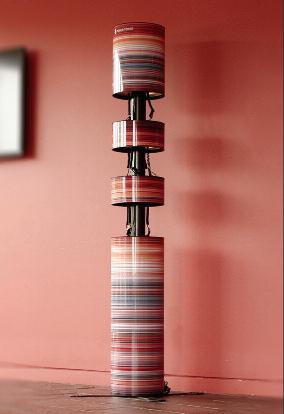
Three Rutgers alumnae and their professor traveled to Copenhagen in July for the Dance and the Child International 13th World Congress, a conference for professionals interested in dance practice for youth. Jenna Kiefer, Kyle Georgina Marsh, and Cassandra Roberts, all graduates of the master’s degree in dance education (EdM) program at Mason Gross School of the Arts and the Rutgers Graduate School of Education, as well as Barbara Bashaw, the director of the program, spent seven days in Denmark’s capital city to present research, attend panels and workshops, and network with other dance educators from around the globe
The conference, known as daCi, is held every three years and attracts nearly 700 participants from 21 countries. Leading scholars of dance education convene to learn about recent research, compare projects, provide and gather feedback on scholarship, and build new international networks, says Bashaw

“What makes this event particularly unique, however, is that it is the only conference of its type that is also attended by young [students],” Bashaw says “I believe that children have important perspectives to bring to the dance education field, and daCi creates a critical meeting place for scholars, teachers, and youth to dialogue about, experience, and celebrate dance education ”
Presentations and workshops under this year ’ s theme of Twist and Twin: Exploring Identities in Dance in 2015 covered topics including neuroscience and dance, disability-inclusive dance, and the diverse backgrounds of breakdancers Bashaw and her team facilitated three sessions, speaking about the influence of social media and digital technologies in the classroom, project-based learning, and the perspectives of adolescent dance-makers.
In their presentation on social media, Bashaw, Kiefer, Marsh, and
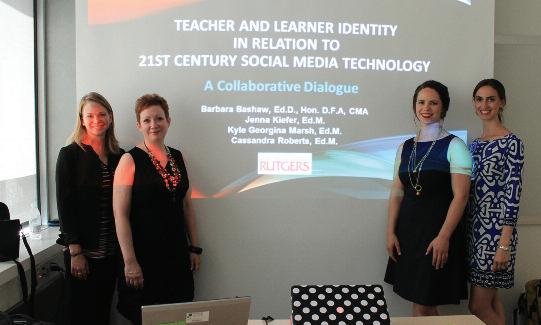
Roberts all members of a think tank created by Bashaw in 2010 for Rutgers graduates to explore issues in dance and dance education presented original research from an international survey of students and teachers of all ages and educational settings (EdM alumna Meg Hebert Regan also contributed to this research, but was unable to attend the conference) Their findings covered the classroom usage of online video references for dance, attitudes toward social media, and student expectations and identity when using social media technology.
The discussion with other educators afterward “opened up some interesting conversations,” says Roberts, a 2013 EdM graduate who teaches dance at Passaic County Technical Institute in Wayne, New Jersey. “Some of them were using technologies that we had never heard of, and some of them were wondering about the technologies that each of us were using in our classrooms ”
Roberts was also interested to learn if other teachers were dealing with the challenges of the digital world that she faces with her students, including the lack of online access at home
“I definitely felt a sense of comfort knowing that other people are experiencing the same things that I am, whether they are dilemmas or benefits of the things that I’m employing in my own classroom,” Roberts says.
A ll charge d up


Thanks to Visual Arts BFA student Courtney Averett, our charging station at Mortensen Hall is no longer ho-hum Dean Stauffer chose Averett’s design from among several submitted by students in one of Jacqueline Thaw’s design classes.

During the weeklong trip, which was made possible with support from Mason Gross School of the Arts and the Rutgers Graduate School of Education, Bashaw found herself reflecting on future adjustments to the EdM program curriculum including creating more community-building activities as she both collaborated with and observed her team of alumnae in panel discussions
“It was a thrill to watch our alumni interact intelligently with top scholars and dance educators from around the world,” says Bashaw “In my role directing a graduate program, it was valuable and informative for me to view the entire experience through their eyes ”
For Roberts, the trip was a rare chance to network with professionals from countries as far away as New Zealand, who inspired a host of ideas that she looks forward to adding to her curriculum in the coming school year
“It was a huge, wonderful mix of people from all over the world coming together for similar interests,” Roberts says. “How often do we get to do that as dance educators?”
PHOTOS COURTESY OF COURTNEY AVERETT
16
Jenna Kiefer, from left, Professor Barbara Bashaw, Kyle Georgina Marsh, and Cassandra Roberts presented original research from an international survey of students and teachers
Cassandra Roberts in a Baroque garden at Frederiksborg Castle, in Hillerød, north of Copenhagen
PHOTOS BY JENNA KIEFER
COMMENCEMENT


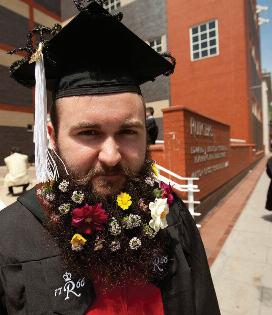
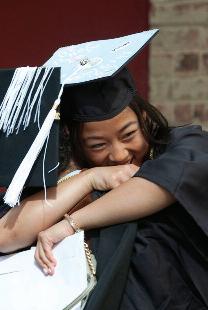

2 0 1 5
More than 200 students graduated on May 15 at New Brunswick’s elegantly restored State Theatre. Two students even walked out of graduation with their first “earnings”: $100 each for the most-creative mortarboards. Esteemed choreographer and Urban Bush Women founder Jawole Willa Jo Zollar (at left) addressed the grads and their guests, as did music education grad Ilana Silverman Below, this ceremony was Dean of Students Casey Coakley’s last before retirement..
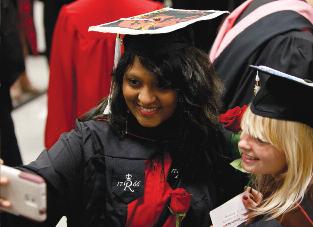

17 PHOTOS BY JODY SOMERS
Student soprano ‘saves the day’ as last-minute replacement in Baltimore opera
BY LAURIE GRANIERI
Baltimore Concert Opera executive director Julia Cooke had a dilemma several dilemmas, really: Violence had erupted throughout the city in the wake of the April 19 death of Freddie Gray, a 25-year-old black man who had died in police custody Cooke, concerned for the safety of her artists, was forced to cancel a crucial rehearsal of Léo Delibes’s opera Lakmé
Three days before curtain, the city imposed a curfew, which meant the BCO’s Friday-night concert performance in the ballroom of a mansion just north of downtown might have to be scrapped
Then Cooke’s Lakmé became ill Soprano Sharon Cheng was forced to bow out Cooke needed a Lakmé fast “We put out our ‘Bat Light,’ ” Cooke joked, referring to the signal that Commissioner Gordon shines to beckon Batman
The BCO’s Bat Light along with access to YouTube and a wide network of artists led the staff to 23-year-old Rutgers student Kaitlyn Davis As luck would have it, Davis says, in January, BCO conductor Anthony Barrese’s agent caught the Mason Gross School’s production of Lakmé, featuring Davis in the title role With that tip, Cooke says, the staff reviewed a YouTube video of the performance and listened
to audio on the cell phone of artistic and founding director Brendan Cooke They were sold
But Davis, who graduated from Rutgers in May with a master’s of music degree, had her own problems: Her mother was scheduled to undergo surgery for thyroid cancer in New York City on the very day the BCO wanted her in Baltimore for a rehearsal Davis knew the last-minute opportunity might very well launch her opera career, or at least give her a leg up after graduation Still, she was reluctant to leave her mother’s side “I had to check with my family,” Davis says “My mom said, ‘This is definitely something you need to do ’” Davis arrived home from the hospital around midnight, headed to Baltimore early Thursday morning, and met the Lakmé cast at the 6 p.m. dress rehearsal. Just over 24 hours later, on Friday, May 1, the soprano was onstage in that Baltimore ballroom, performing a role that she describes as a “stamina challenge
I have to rely on every ounce of technique not to burn out by the end ” She performed the role on Sunday, May 3, as well
'HAIR-RAISINGLY DIFFICULT'
Rutgers vocal coach Pam Gilmore, also coordinator of the opera program and producer of the Rutgers production of Lakmé, described the lead, with its four arias and five duets, as “ a hair-raisingly difficult coloratura role to sing She is literally on stage for almost all of the opera It is so demanding that the opera is infrequently performed, and it is a dramatic tour-de-force to boot!”
Fortunately, Davis says, the role “ was still in my brain and body I had prepped so much for the New Brunswick production The harder a role is to prep, the more it sticks with you ” However, she adds, as a young artist, “I definitely felt the pressure working with more-established singers ”
She shouldn’t have worried

“Kaitlyn Davis was well-suited to the title role, bright of voice and effortlessly navigating the broad vocal range required The high notes in the famous ‘Bell Song’ were hit perfectly and naturally, with no evidence of strain,” critic Phillip Nones wrote on bachtrack com
“Even more impressive,” he continued, “considering the lack of rehearsal time, were the near-flawless blending of voices Davis achieved with mezzo-soprano Madelyn Wanner as Mallika in the Act I ‘Flower Duet’ and with tenor Ryan MacPherson as Gérard in the three arias he shared with Lakmé ”

Eduardo Chama, Davis’s voice teacher at Rutgers, says: “The stage loves her Jumping into a role at the last minute is never easy, but this is how the life of an artist is It’s almost like a sport: You need to keep in shape and ready It’s match point what are you going to do, win or lose? I think her positive attitude and energy in general help ”
exhibit rolls into Brooklyn
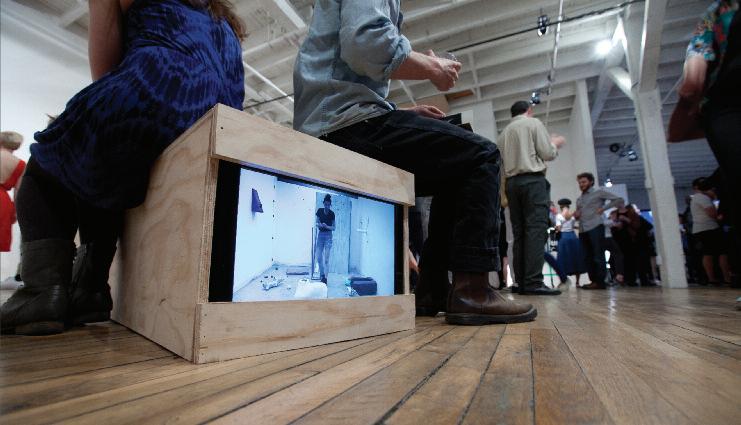
Role Over MFA
The annual MFA visual arts show in New York City took place April 18 through May 3 at Gowanus Loft in Brooklyn. Role Over featured a wide variety of media, representing the work of 17 graduating MFA students, including this piece by
BCO’s Julia Cooke praises the young vocalist for being “ an absolute pro She handled it really professionally, and for such a young person to come in and not just sing well but come into the fabric of our artistic community she saved the day We’ll be forever grateful to her ”
18
Davis starred in the title role of Lakmé here on campus She says the role “ was still in my brain and body” when she sung it professionally several months later. KEITH MUCCILLI
Sarah Mattes
JODY SOMERS
STUDENT VOICES
When I auditioned to perform in a work here at Mason Gross by guest dance artists Lee Sher and Saar Harari, I had never considered that I could actually work for them professionally. As with previous guests, I brought enthusiasm to each rehearsal, and I truly believe this energy and discipline were key to my success:
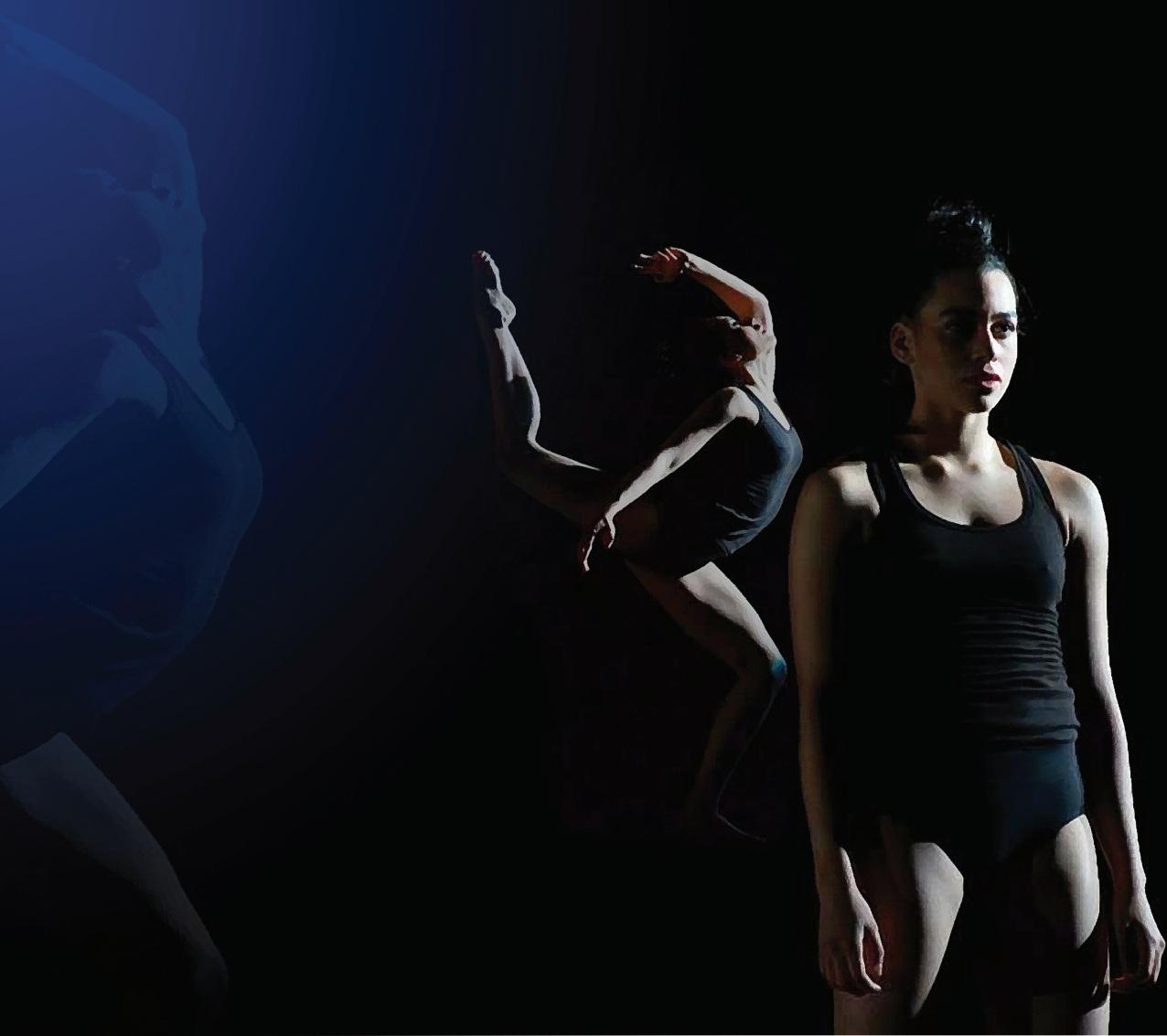
I was invited to rehearse with LeeSaar The Company during spring break, and by the end I was asked to join them as an apprentice for the August 6 performance of their work Grass and Jackals in this year ’ s Celebrate Brooklyn! festival in Prospect Park
We rehearsed from 10 a m to 3 p m Mondays through Thursdays, constantly learning and creating material. Lee and Saar taught me to never let myself become complacent with my performance, because the bar can always be raised Lee and Saar incorporated the ideas of Gaga movement language, invented by Israeli choreographer Ohad Naharin, into their choreography. I was new to Gaga, and I entered the apprenticeship with excitement but also an abundance of nerves Eventually, I embraced my frustration, because I realized that from this uncomfortable place I was actually growing as an individual and as an artist.
The Gaga language takes the dancer outside the constrictions of classical form to find their own “ groove, ” which can be defined as one ’ s desire to move. This idea of connecting to my own groove and allowing pleasure into moments of effort or weakness had the most impact on my perspective of dance and choreography
Ultimately, I learned that if I do not want to do something, it will not be done at its best. When I used this genuine source of pleasure to explore movement, I became much more satisfied with the outcome
In Memoriam
The Mason Gross School of the Arts community reports with great sadness the loss of alumni and friends of the School. We extend our condolences to each of their families and classmates.
All death notifications included in this issue of our magazine were submitted to the university after our last issue in the spring of 2015 and before going to press on this issue We apologize for any omissions and ask that loved ones of deceased alumni, friends, donors to the school, faculty, and staff notify us by emailing records@winants rutgers edu Please be sure to include the full name of the deceased, name as a student, death date, class year, and major Thank you
Wa l t e r J B re n n a n , M u s i c , 1 9 7 5 , M FA , N o v e m b e r 3 0 , 2 0 1 2 Ly n n A . B r u n s k i l l , A r t , 1 9 9 0 , B FA , J u l y 9 , 2 0 1 5 M e n g - C h u n C h i , M u s i c , 2 0 0 3 , D M A , J u n e 2 4 , 2 0 1 5 A l v i n H G o l d b l a t t , M u s i c , 1 9 6 3 , B A , D e c e m b e r 2 0 1 4 A n n M . K e l l y, M u s i c , 1 9 3 4 , B A , J u n e 7 , 2 0 0 6 L i n d a C K e s s l e r, M u s i c , 1 9 6 7 , M A , A p r i l 2 0 , 2 0 1 5 R o n a l d B r u c e L e v y, A r t , 1 9 6 9 , B A , O c t o b e r 7 , 2 0 1 3 Wa l t e r A . L i e d t k e , A r t , 1 9 6 7 , B A , F e b r u a r y 4 , 2 0 1 5 L e a h L i p t o n , A r t , 1 9 4 9 , B A , A p r i l 2 8 , 2 0 1 5
T i m o t h y G M c S w e e n e y, A r t , 1 9 6 5 , M FA , 2 0 1 0
C a ro l R . M u s c h e t t e , M u s i c , 1 9 7 9 , B A , M a rc h 2 5 , 2 0 1 5

M a r y K re y l i n g N a u g l e , M u s i c , 1 9 4 4 , B A , J u n e 6 , 2 0 1 5
S u z a n n e P i e t ro w s k i , A r t , 1 9 9 0 , B FA , J a n u a r y 2 6 , 2 0 1 4
19
PHOTOS BY CHRISTOPHER DUGGAN
MASONGROSS
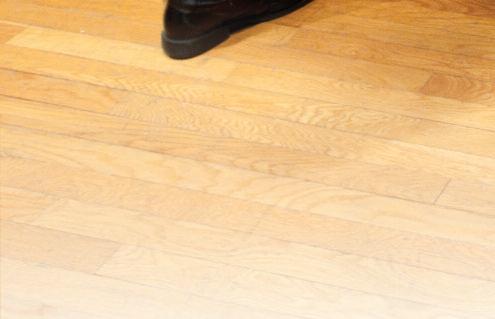
OFTHEARTS
REATINGARTISTS

Behind the Scenes
Non-Profit Organization U S Postage P A I D New Brunswick, NJ Permit # 622
Rutgers, The State University of New Jersey 33 Livingston Avenue New Brunswick, N J 08901
JODY SOMERS
Percussionist Mesia Austin warms up before a Rutgers Symphony Orchestra performance, April 17, 2015
4
C
SC H OOL
0 FORTYYEARS OF
 Walker, Tepper Chair in Visual Arts
Walker, Tepper Chair in Visual Arts













 BY RISA BARISCH
BY RISA BARISCH










 Photographer Gary Schneider’s Mask Self-Portrait, 1999 In the spring, the university honored Schneider, a Visual Arts faculty member, with a research fellowship.
Photographer Gary Schneider’s Mask Self-Portrait, 1999 In the spring, the university honored Schneider, a Visual Arts faculty member, with a research fellowship.

 JESSICA DICKINSON
JESSICA DICKINSON










 Erin Dowd, who participated in a Merce Cunningham workshop on campus while here as a dance student, performed in a reconstruction of Cunningham’s dance drama Crises at New York City’s Whitney Museum of American Art in June
Basia Goszczynska’s Engineered Hollow (2014), made of chicken wire, steel rod, plastic bags, wood, and cement, was on view in Long Island City, New York.
Erin Dowd, who participated in a Merce Cunningham workshop on campus while here as a dance student, performed in a reconstruction of Cunningham’s dance drama Crises at New York City’s Whitney Museum of American Art in June
Basia Goszczynska’s Engineered Hollow (2014), made of chicken wire, steel rod, plastic bags, wood, and cement, was on view in Long Island City, New York.
 BY RISA BARISCH
BY RISA BARISCH





 BY ALEXANDRA KLAASSEN
BY ALEXANDRA KLAASSEN





















